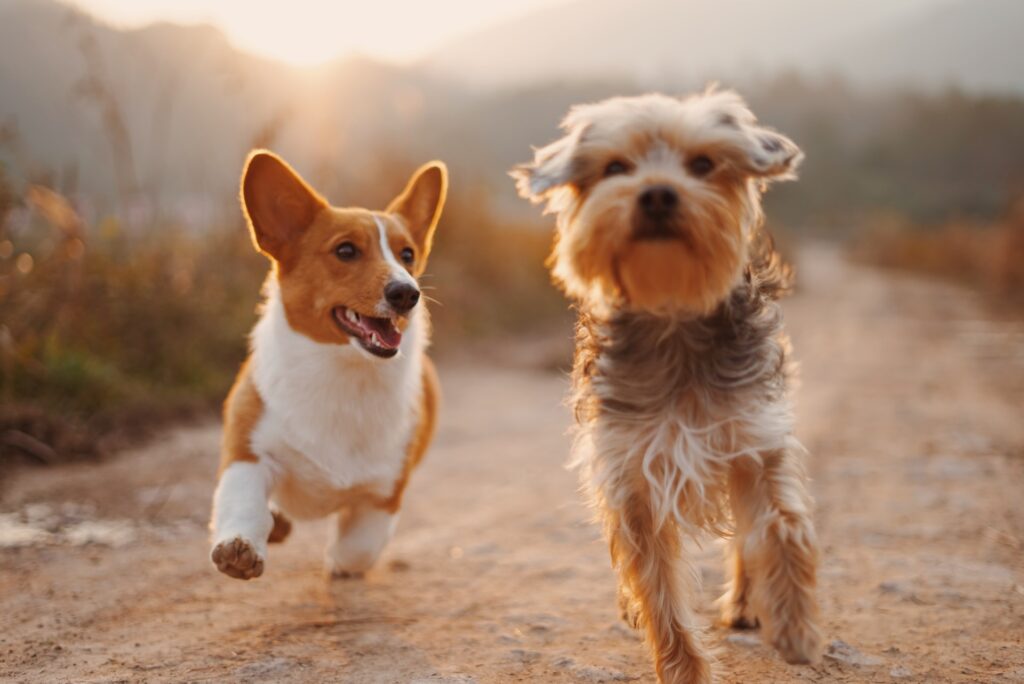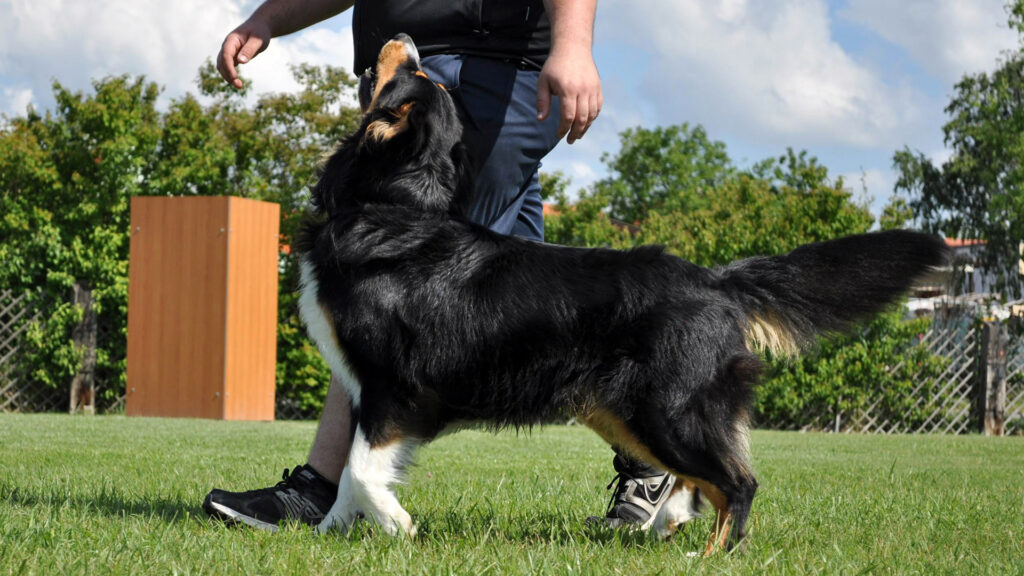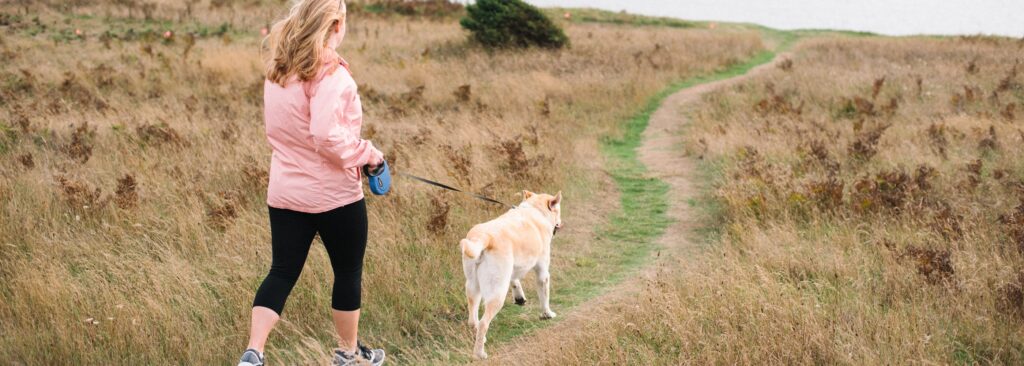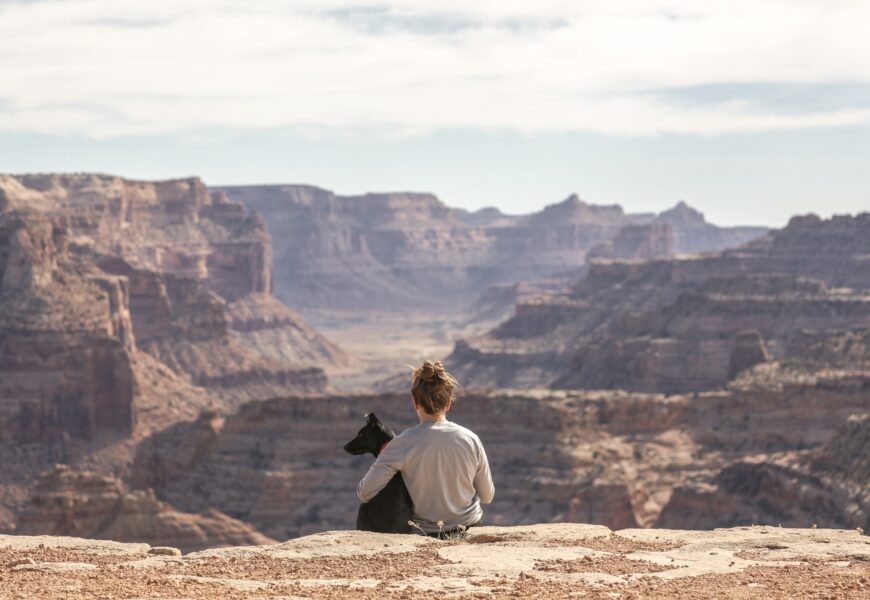Taking care of your dog after an outdoor adventure. Taking care of your dog’s health and happiness.
KEY TAKEAWAYS
- Take your time getting back to the vehicle after a trek so your dog doesn’t become car sick.
- Dogs need regular grooming for their health and comfort, however the frequency required will change depending on the dog’s specific situation.
- If you want to thank your dog without worrying about their health, choose treats that are suitable for dogs.
- It’s best to wait a while after a walk before feeding your dog.
- Consider characteristics like dirtiness and odor before deciding when to give your dog a bath.
- Make your house a relaxing retreat for your dog to enjoy some downtime.
- Pay attention to your dog’s actions after the trek so you can meet its specific requirements.
In a world that often keeps us glued to screens and confined within walls, a refreshing escape awaits you and your loyal companion – dog-friendly hiking trails. You and your four-legged friend may enjoy some quality time in the great outdoors thanks to these trails.
Hiking with your dog is more than just exercise; it’s a chance to spend quality time together in the great outdoors.
An obvious feeling of awe comes with venturing out into the big outdoors, where the wind rustles through the trees, and the sun spreads its warm warmth over the wilderness.. This experience becomes even more enriching when shared with a loyal companion – your furry friend. This article will explore the topic of dog-friendly hiking routes, teaching you how to take your dog on adventures that are both fun and safe.
Questions about post-hike care might arise as you and your furry friend complete a thrilling hike. After the adventure, it’s natural to wonder about the best practices to ensure your dog’s comfort and well-being. In this article, we’ll address common post-hike care queries, providing valuable insights for a rewarding hiking experience.
Embracing Nature with Your Canine Companion
Outdoor activities are fantastic for strengthening the bond between dogs and their owners. Hiking with your dog is a great way to go outside and enjoy nature away from the bustle of the city. Having a canine pal along for the ride increases the fun factor while traveling along winding trails and scaling lofty summits.
Is Hiking Hard for Dogs?
Understanding Your Dog’s Physical Abilities Dogs are naturally active and energetic creatures, but their physical capabilities vary based on breed, age, and overall fitness. Before embarking on a hiking adventure, assessing your dog’s physical condition is essential. Consult with your veterinarian to ensure your dog is in good health and capable of handling the physical demands of a hike.
Assessing Your Dog’s Fitness Level:

Just like humans, dogs require preparation before engaging in strenuous physical activities. Gradually increase your dog’s exercise routine in the weeks leading up to the hike. Longer walks, play sessions, and short hikes can help build stamina and muscle strength.
Considering Age and Breed Factors:
Different dog breeds have distinct physical characteristics and needs. While some breeds are natural hikers due to their heritage, others may struggle with certain terrains. Additionally, puppies and senior dogs have specific limitations that must be considered. Tailor your hiking plans to your dog’s age and breed to ensure a comfortable experience.
Gradually Building Stamina:
If your dog is new to hiking, take a progressive approach. Start with shorter and less challenging trails, gradually increasing the distance and difficulty as they become more accustomed to the activity. This approach prevents overexertion and allows your dog to adapt to the physical demands of hiking.
How to Take a Dog on a Hike?
Preparing for the adventure taking your dog on a hike involves thorough preparation to ensure their safety and enjoyment. Begin by selecting the right leash and harness. Choose a harness that provides support and comfort without restricting their movement. A sturdy leash allows you to maintain control while giving your dog some freedom to explore.
Proper Leash and Harness Selection:
Opt for a leash that’s appropriate for the trail conditions. A longer leash may be suitable for open areas, while a shorter leash is preferable in crowded or narrow spaces. Ensure the harness fits snugly and doesn’t chafe your dog’s skin.
Basic Obedience:
Training Basic commands such as “sit,” “stay,” and “come” are crucial for your dog’s safety during the hike. Practice these commands regularly before hitting the trail. A well-trained dog is likelier to stay close, respond to your cues, and avoid potentially dangerous situations.
Familiarizing Your Dog with the Outdoors:
Before embarking on a hike, introduce your dog to the sights, sounds, and scents of the outdoors. Take short walks in local parks or nature reserves to help them become comfortable with the environment. This familiarity reduces the likelihood of your dog becoming overwhelmed by new sensations during the hike.
Planning the Hike:

Choosing Dog-Friendly Trails Not all trails are suitable for dogs. Research and select dog-friendly and appropriate trails for your dog’s fitness level. Look for trails that allow dogs off-leash if your dog has excellent recall and social behavior.
Checking Trail Regulations and Policies:
Before heading out, familiarize yourself with trail regulations and policies regarding dogs. Some trails may have specific rules, such as leash requirements or designated dog-free zones. Respecting these regulations ensures a positive experience for you and other trail users.
Packing Essentials for Your Dog Just as you pack essentials for yourself, your dog requires their own supplies for the hike. Carry ample water and a portable bowl to keep your dog hydrated. Nutritious snacks and treats provide sustenance during breaks. A canine first aid kit can be a lifesaver in emergencies. Remember waste disposal bags to uphold trail etiquette.
What Do Dogs Need for Hiking?
Essential Gear and Supplies When venturing into the wilderness, having the right gear to keep your dog comfortable, safe, and happy is essential.
- Water and Portable Bowl Staying hydrated is crucial for your dog’s well-being. Carry enough water for both you and your furry companion, and offer them regular water breaks. A collapsible portable bowl makes it convenient for them to drink.
- Nutritious Snacks and Treats Hiking can be physically demanding, and your dog may need an energy boost. Pack nutrient-rich snacks and treats that are easy to carry and provide a quick energy source.
- Canine First Aid Kit Accidents can happen, even on the trail. A canine first aid kit should include bandages, antiseptic wipes, tweezers for removing splinters, and any medications your dog might need.
- Waste Disposal Bags Responsible pet ownership includes cleaning up after your dog. Pack waste disposal bags to pick up and dispose of your dog’s waste properly.
- Comfort and safety To ensure a safe and enjoyable hiking experience for your dog, consider these additional items:
- Suitable Doggie Backpacks For longer hikes, a doggie backpack can help distribute the weight of their essentials. Make sure the backpack fits comfortably and doesn’t cause any discomfort.
- Protective Dog Clothing and Boots Depending on the terrain and weather conditions, your dog might benefit from wearing protective clothing or boots. Boots can prevent injuries to their paw pads, especially on rocky or hot surfaces.
- Sunscreen and Insect Repellent Just like humans, dogs can suffer from sunburn and insect bites. Use pet-safe sunscreen on areas with thin fur and apply insect repellent to protect them from ticks and mosquitoes.
Rest Breaks and Shade Hiking can be physically taxing, so taking regular rest breaks is essential. Look for shaded areas where your dog can cool down and rest before continuing the journey.
Protecting Dogs’ Paws While Hiking
Understanding Paw Care A dog’s paws are their primary mode of transportation and require special attention, especially on hiking trails.
Potential Hazards on Trails:
Trails can pose various hazards, including sharp rocks, thorns, burrs, and hot surfaces. Being aware of potential dangers that could harm your dog’s paws is crucial.
Paw Pad Inspection and Maintenance:
Before and after the hike, inspect your dog’s paw pads for cuts, scrapes, or foreign objects. Trim any excess hair between their paw pads to prevent debris from getting lodged.
Using Paw Protection:
To safeguard your dog’s paw pads, consider these protective measures:
Dog Boots and Paw Balms:
Dog boots provide excellent protection against rough terrains and extreme temperatures. They also prevent cuts and abrasions. Paw balms can help moisturize the dog’s paws.
What to Do with a Dog After Hiking: Ensuring Your Furry Friend’s Well-Being

After an exhilarating adventure on the trails with your canine companion, the journey doesn’t end at the hike’s conclusion. Taking care of your dog’s well-being post-hike is as important as preparing before the hike. In this section, we’ll explore essential steps to ensure your furry friend’s comfort and happiness after a day of exploring the great outdoors.
Post-Hike Care
The moments following a hike are crucial for your dog’s recovery and comfort. You’re fostering a strong bond and creating positive associations with outdoor adventures by tending to their needs.
Thorough Paw Inspection and Cleaning
Before doing anything else, inspect your dog’s paws carefully. Hiking trails can expose their paws to various elements, including debris, mud, and potential injuries. Clean their paw pads between their toes to remove dirt or foreign objects. If you notice any cuts or scrapes, clean them with an antiseptic and apply a pet-safe ointment.
Hydration and Nutritious Meal
Just like you need to rehydrate and refuel after a hike, your dog does too. Provide it with a generous amount of fresh water to drink. Dehydration can lead to discomfort and health issues, so encourage your dog to drink. After sufficient hydration, offer them a balanced and nutritious meal to replenish their energy levels.
Rest and Relaxation
After a strenuous hike, your dog may need some downtime to rest and recover. Create a cozy spot for them to lie down, preferably in a cool and shaded area. Allow them to unwind and take a nap. Physical activity can be tiring, and adequate rest is essential for their well-being.
Bonding and Rewards
Hiking is a shared adventure that strengthens the bond between you and your dog. After the hike, engage in activities that further solidify your relationship.
Spending Quality Time Together
Dogs thrive on companionship, and post-hike moments are ideal for quality time. Your dog will appreciate the connection, whether you’re lounging together or engaging in gentle play. Your presence reinforces the positive experience of the hike and makes them feel loved and cherished.
Positive Reinforcement and Treats
During the hike, your dog likely followed commands and displayed good behavior. After the hike, reinforce positive behavior by offering treats and verbal praise. This positive reinforcement encourages them to associate hiking and following your cues with rewards.
Grooming and Cuddles

Grooming is not only practical but also a bonding experience. Brush your dog’s coat to remove any dirt or debris accumulated during the hike. This not only keeps it clean but also strengthens your connection. Additionally, many dogs enjoy cuddling after physical activity. Take the time to snuggle and provide affection, further deepening your bond.
Bonding After the Hike: Strengthening Your Connection
Quality Time Together
The journey continues beyond the trails as the sun sets on your invigorating hike. This is your time to forge an unbreakable bond with your four-legged companion. Quality time after a hike is more than just a moment; it’s a chance to deepen your connection.
Engaging Activities
Imagine lounging under the shade of a tree, your dog by your side, sharing stories without uttering a word. Engaging in activities that resonate with your furry friend fosters companionship and trust. Gentle play, where laughter mingles with panting, solidifies the positive experience of the hike.
Can I Take My Dog Directly from a Hike to a Car Ride?
The Importance of Transitioning
After an exhilarating hike, heading straight to a car ride might seem convenient. However, it’s essential to consider your dog’s well-being and comfort during this transition.
Transitioning with Care
Taking your dog from a hike to a car ride can lead to discomfort, especially if they’re overheated or restless. Allow your dog to cool down and rest before introducing them to the car. Provide water and let them relax in a shaded area before embarking on the journey.
Is It Necessary to Groom My Dog After Every Hike?
Grooming for Comfort and Health
Grooming your dog after a hike serves both practical and health-related purposes. However, the necessity of a full grooming session may vary based on the hike’s duration and terrain.
Assessing the Need
A grooming session is beneficial if your dog is covered in mud, dirt, or plant debris. Grooming helps remove potential irritants and prevents skin issues. A thorough paw cleaning and brushing might be sufficient for shorter hikes on well-maintained trails.
Can I Give My Dog Human Snacks After a Hike?
Tempting Treats or Potential Risks?
While sharing your snacks with your dog is tempting, not all human foods are safe for them. Some snacks can pose health risks or lead to digestive issues.
Opt for Dog-Friendly Treats
Instead of sharing human snacks, opt for dog-friendly treats. Carry nutritious treats specifically designed for dogs during hikes. These treats are safe and provide a suitable reward for their efforts.
How Long Should I Wait Before Feeding My Dog After a Hike?
Timing for Optimal Digestion
After a hike, your dog’s body requires time to cool down and recover before engaging in any activity, including eating.
Allow Time to Rest
Wait about 30 minutes to an hour before offering your dog a meal. This interval stabilizes their body temperature and prevents any potential digestive discomfort from immediate feeding.
Should I Give My Dog a Bath After Every Hike?
Balancing Hygiene and Over-Grooming
Maintaining your dog’s hygiene is crucial, but bathing them after every hike might not always be necessary.
Bathing When Necessary
A bath is warranted if your dog is particularly dirty, has rolled in unpleasant substances, or is exhibiting a strong odor. However, frequent baths can strip their coat of natural oils, leading to skin issues. Consider alternate cleaning methods, such as grooming and paw cleaning, for regular post-hike care.
Ensuring Your Dog’s Comfort at Home
Providing a Cozy Space
Back at home, your dog seeks comfort and tranquility. Set up a cozy corner equipped with a plush bed, a soft blanket, and perhaps their favorite toy. This designated space offers solace and security, reflecting your love for your loyal companion.
Observing Your Dog
In the aftermath of a hike, each dog reacts differently. Some might be a little more sluggish, while others could be as energetic as they were on the trails. Observe your dog’s behavior and adapt to their needs. If they seek solitude, respect their space. If they’re craving attention, indulge them with affection.
The journey of a hike extends beyond the trails, encompassing post-hike care and bonding moments. You’re ensuring their comfort, health, and happiness by attending to your dog’s needs. The hiking experience becomes more holistic as you nurture your furry friend’s well-being and create lasting memories together. So, as you head out on your next outdoor adventure, remember that the adventure continues even after the hike ends.
As you embrace the joys of hiking with your beloved dog, understanding post-hike care is essential for their well-being. Transitioning your dog from a hike to a car ride, practicing proper grooming, offering suitable treats, timing their meals, and making informed decisions about bathing contributes to a positive and rewarding experience. By catering to your dog’s needs, you’re ensuring their comfort and fostering a stronger bond between you and your loyal companion.
In the heart of nature, you and your dog shared a remarkable journey amidst the trails. The bond forged during the hike doesn’t end; it evolves. You can create lasting memories as the world quiets down and the sun dips below the horizon. Quality time spent together, engaging in activities, and creating a cozy haven at home ensure that the spirit of the hike lives on.
Strengthening your connection with your furry friend is an ongoing adventure. Each hike marks a new chapter, a new memory etched into the tapestry of your relationship. So, as you reminisce about the day’s adventure, remember that the bond you share transcends the trails, weaving its way into your hearts.




